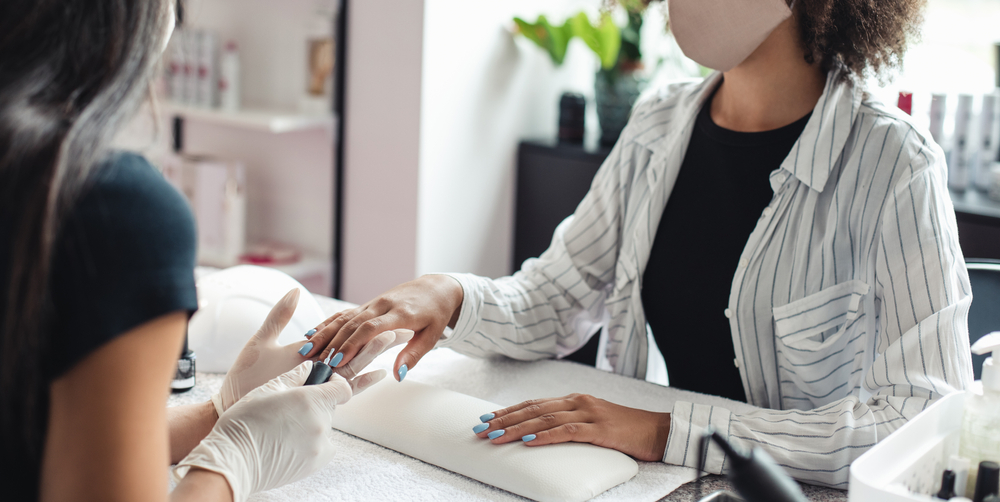*Editor’s Note: This article is for informational purposes only. If you or someone you know is experiencing behavioral health distress, please call the Substance Abuse and Mental Health Services Administration (SAMHSA) National Helpline at 1-877-SAMHSA-7, or consult with a medical professional.
For many of us, it’s normal to have something in our lives we know we should probably stop. Whether it’s the endless pen tapping we do at work or the pricey cup of coffee we buy every morning. They are habits we don’t always make much of an effort to shake off because they aren’t drastically changing the course of our lives.
But when our urges are tightly connected to deeper emotional episodes, those that trigger anxiety and distress, they’re no longer just surface-level issues. They are way more serious.
Dermatillomania, more commonly known as skin picking, is one of these challenges.
What is Dermatillomania?
If you find yourself facing an ongoing impulse to pick at your skin, you are not alone. According to the National Institutes of Health (NIH), approximately 2% to 5% of American adults experience dermatillomania, a type of body-focused repetitive behavior (BFRB) that leads to repetitive picking of one’s skin, ending up in skin and soft tissue damage.
Although 75% of all those affected are female, commonly starting at the onset of puberty around the ages of 13 to 15, the condition can grow into an issue at any point in one’s life.
The NIH also notes that while there are various physical and mental factors that can trigger skin picking, there is a clear, definite difference between a recreational picking of one’s skin and a dermatillomania diagnosis. We all pick at certain areas of our skin to some degree, but those people who are considered to have a skin-picking disorder typically spend a significant chunk of their time doing so, where it interferes with occupational responsibilities, social functions, or both. Some individuals pick due to stress and anxiety while others pick to smooth and flatten the surface of their skin, which can feel satisfying for the moment. Some people simply get stuck in an “itch-scratch cycle” that they can’t stop, and for other individuals, more than one reason may apply.
Dermatillomania Symptoms
Doctors say the main symptom of dermatillomania is the uncontrollable urge to pick at your skin (you’ve tried to stop and you can’t). The “picking” may also include digging, squeezing, scratching and rubbing to the point where it results in bruises, scars, scratches and sores that are sometimes so severe they affect your daily life and make you feel upset or embarrassed. Most people pick at their skin with their fingers or fingernails, but some also use needles, tweezers, scissors or pins. Others will also use their teeth, for example, to bite at their lips.
Types of Skin Picking
Automatic picking mostly happens more or less without your giving it much thought. It may occur while you’re watching TV, driving or reading. The experts say automatic picking might also be a form of self-stimulation, as many describe feelings of relief when they pick at their skin, but it’s often followed by anger and shame.
During focused picking, you are more aware of the urge to pick in a specific area. The impulse appears as ideas or the need to remove irregularities such as sores, pimples or scabs, or to stop physical feelings like skin itching or tingling. Clinicians also say that focused picking may be a way to avoid feelings of boredom or discomfort.
Where Dermatillomania Shows Up
The areas most affected by skin picking typically include the parts of your body that can be easily reached with your hands, such as your:
- Face (the most common area), neck, scalp
- Fingers, forearms, and hands
- Thighs, calves, feet, and toes
Why a Pretty Manicure Can Help
Doctors say dermatillomania is usually treated with medications such as antidepressants or with cognitive behavioral therapy, a type of talking therapy. It includes techniques such as habit reversal training that helps patients recognize and become more aware of their skin picking and what triggers it. While these treatments have proven effective for many patients, some people have found an alternative solution to curb the urge to pick at their skin in an unexpected place: their local nail salon.
According to the Picking Me Foundation (a donor-supported nonprofit dedicated to advocating for dermatillomania sufferers), many people are sharing how, whether applied by a professional or by themselves, there are advantages to using acrylic nails (artificial nail extensions placed over the fingernails) for skin picking.
“With my damaged skin, I needed to make my fingers look somewhat decent,” writes Thatiana Diaz, a beauty contributor for Refinery29. She was constantly picking at the skin around her nails. “And after having the acrylic on for three weeks, I realized I hadn’t picked at my fingers and my skin was actually growing back. So, I made the decision to keep refilling my nails and with time, my fingers began to finally look normal.”
@nailbeanails Ladies, try it consistently for 2 months and send us some before & after pics – we’d love to see the changes! #pressonnails #manicure #anxiety #smallbusiness #mentalhealth #dermatillomania ♬ Self Care – Mac Miller
As it turns out, the nail extensions create a barrier in the small space between the nail and the finger, making it difficult to tamper with the skin. Some people have even noted how the longer, slightly thicker tips (they say almond and round-shaped versions are best; they aren’t sharp enough to pierce the skin) make it nearly impossible to obtain a proper grip on the skin in order to pick it. Picking Me has also noted that the nails create a heightened awareness of where and how the wearer’s fingers touch their bodies. The extensions create a foreign sensation on the skin, so when a wearer scans their body to pick, they become desensitized to their fingers, minimizing the urge to pick.
However, like many things, there are challenges. Wearers admit that while they find getting manicures a helpful part of their healing cycle, they are a considerable financial investment. And for those who pick at areas that are obvious to nail technicians (their cuticles, for example), some have found themselves extremely embarrassed to admit they’ve caused the damage. In cases like these, Picking Me stresses the importance of finding a nail salon where you feel comfortable, have the confidence to explain the situation, and connect with a technician with whom you can build a rapport.
@bria.stuart ok the tiktok accountability for biting my nails & picking at my skin starts now lmao. i’m gonna try to go back to how i was a few months ago 😩
♬ original sound – Bria Stuart
The Final Takeaway
Dealing with dermatillomania is much more than just a skin-picking habit. It is reflective of a disorder that doctors say, when the behavior is chronic, it results in physical damage, dysfunction and severe suffering. And certainly, taking care of your mental health with the assistance of a licensed, trained medical professional should remain top priority.
While the long-term wear and touch-ups of acrylic nails can leave nails thin, brittle and parched for some wearers, our knowledge that something as easily accessible as a manicure might demonstrate the argument that the beauty service can be helpful as a supplemental support tool for some people suffering with the disorder. It might serve as somewhat of a silver lining of hope, healing, and self-care.








